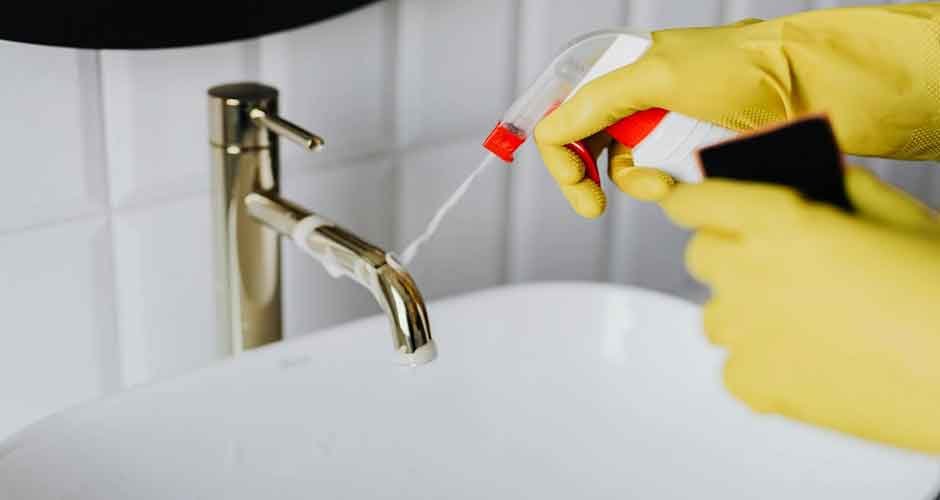Have you ever stopped to consider how many chemicals we interact with daily?
We live in a world where convenience often comes at a cost, and that cost can usually be invisible. Various consumer products, from household cleaners to personal care items and even food packaging, contain a surprising number of chemicals. While they make our lives easier, chronic exposure to these chemicals can pose potential health risks.
In this blog post, we’ll explore the chemical exposure risks and learn how to protect yourself and your loved ones.
Common Sources of Chemical Exposure
There are several examples of chemical exposure in our daily lives. Being mindful of them is the first step in minimizing their risks. So, let’s start with the most basic ones, like the products we use in our homes.
Household Products
Our homes are a prime example of this danger. Common cleaners and personal care products have hazardous substances that can be inhaled or absorbed through the skin.
For example, products with formaldehyde, phthalates, and parabens are common in many homes. These chemicals can cause respiratory issues, skin irritations, and other health problems. Moreover, bleach- and ammonia-based cleaners release fumes that may cause breathing difficulties and skin and eye irritation. Personal care items also pose risks. Many shampoos, lotions, and cosmetics contain coal tar, additives, and silicones. Go for organic beauty products made from honey and other natural ingredients.
These chemicals can disrupt hormones and potentially lead to health issues over time. Chemicals like bisphenol A (BPA) and phthalates leach from plastic containers and food packaging, leading to the ingestion of these toxic substances. These chemicals build up over time, potentially causing health issues like hormonal disruptions and developmental disorders.
The PFAS Problem
Another group of chemicals that builds up in the body and your environment is the per- and poly- fluoroalkyl substances (PFAS). These synthetic chemicals are found almost everywhere, from non-stick cookware and flame retardants to waterproofing and stain-resistant applications.
Experts estimate that at least 200 million Americans, or over 58% of the American population, have been exposed to PFAS. As of May 2024, over 6,180 sites across 50 states are reported to be contaminated. The issue is so severe that it has resulted in legal proceedings. The firefighter foam lawsuit is one such example.
The lawsuit highlights the legal repercussions for companies that fail to disclose the dangers of their products. TorHoerman estimates that over 9,150 lawsuits are underway in the District Court of South Carolina. This lawsuit seeks compensation for the affected individuals and aims to increase public awareness and drive regulatory changes. However, the risk goes beyond the walls of our homes.
Industrial Accidents and Environmental Contaminants
Industrial accidents and chemical spills can also release harmful chemicals into the environment. A 2023 report revealed an alarming fact—chemical accidents, in the United States occur on average every other day.
The 2023 Ohio train derailment accident in East Palestine is the perfect example. The accident involved 38 train cars burning for over 48 hours, releasing hydrogen chloride and phosgene into the environment. Over 1500 individuals were asked to vacate their homes, as the accident affected the air and water quality in the area.
A year and a half later, the cleanup is still underway as the burning scattered the toxic chemicals across 16 states. Toxic residues were found in South Carolina and New England. Such accidents can have a detrimental impact on both human bodies and the environment. The long-term consequences of these events may include soil contamination and groundwater pollution. This can impact food and water sources for years to come.
Climate Change and E-waste
Industrial accidents, coupled with the increasing threat of extreme weather events due to climate change, can significantly impact the safety of hazardous waste facilities.
The Government Accountability Office (GAO) estimates that about 25% of hazardous US chemical facilities are at risk of climate-induced flooding, storms, and wildfires. Over 10,000 establishments were analyzed, and at least 3,200 face active danger from increasing sea levels, tsunamis, wildfires, or flooding from extreme rain.
Catastrophic emergencies like floods and tornadoes can damage storage tanks and pipelines. This raises the likelihood of chemical releases into the environment. Soaring temperatures and unpredictable weather cycles also jeopardize water sources. They can lead to the spread of contaminants and increase the concentration of pollutants in water bodies.
E-waste is another growing source of chemical exposure. Statista reports that in 2022, over 60 Mt (million metric tons) of e-waste was generated worldwide. By 2030, the number is expected to surpass 80 Mt.
Discarded electronics contain heavy metals, flame retardants, and polychlorinated biphenyls. Inadequate management can release these pollutants into the environment. These can cause severe health issues like cancer, miscarriage, neurological disorders, and diminished intelligence.
How to Minimize Your Chemical Exposure?
Fortunately, there are steps you can take to minimize your chemical exposure in everyday life. Here are some actionable tips:
- Swap harsh chemicals for safer alternatives: Start by choosing safer household products. Look for cleaners and personal care items labeled as “fragrance-free,” “BPA-free,” or “phthalate-free.” Reading labels and researching product ingredients can help you make informed choices.
- Safe Food Storage: When it comes to food, pick stainless steel or glass vessels over plastic ones. Moreover, opt for organic products when feasible. This can help limit your exposure to insecticides.
- Proper Ventilation: Ensure good ventilation when using household cleaners and personal care products. Just open the windows or use exhaust fans while cleaning or applying products. Furthermore, invest in air purifiers for your home and consider using natural air fresheners like houseplants.
- Stay informed: Finally, be aware of your local environmental issues. Pay attention to air quality alerts and water quality reports in your area. If you live near industrial facilities, be mindful of emergency protocols in case of accidents.
People Also Ask
How Can I Test for Chemical Exposure in My Home?
You can use home testing kits for common pollutants like radon, lead, and VOCs. Professional services offer more comprehensive testing. Consider indoor air quality monitors for ongoing assessment. Remember, some chemicals require specialized lab testing, so consult experts for specific concerns.
What Should I Do if There’s a Chemical Spill in My Neighborhood?
If there’s a chemical spill nearby, stay indoors and seal all the openings. Turn off the air conditioning or heating systems that bring in outside air. Follow local authorities’ instructions, which may include evacuation. Keep an emergency kit ready and follow local news for updates.
All in all, living in a modern world doesn’t have to mean sacrificing your health. While chemical exposure is a complex issue, staying informed and proactive can help you fight it. From choosing safer products to advocating for stronger regulations, every step counts in protecting our health and well-being.
Remember, knowledge is power. The more you know about the chemicals in your everyday life, the better equipped you are to protect yourself and your family. Your actions can protect your health while ensuring the well-being of your community and the environment.












